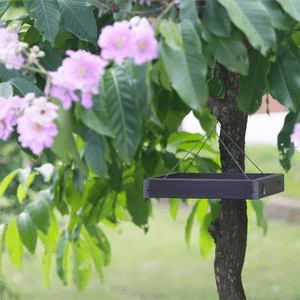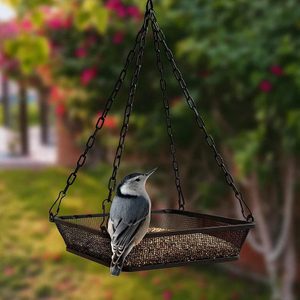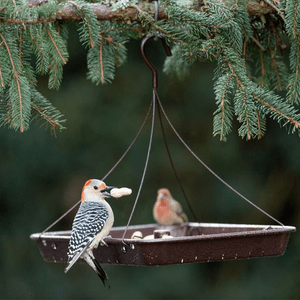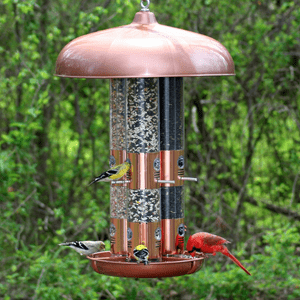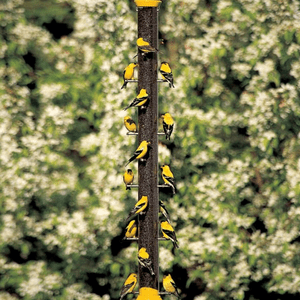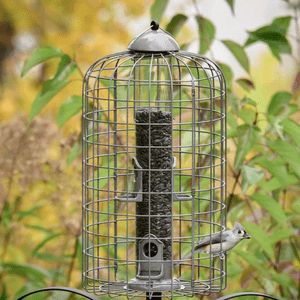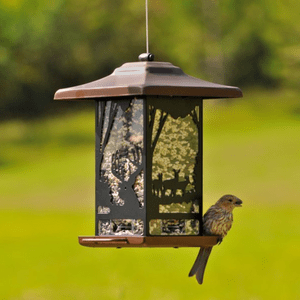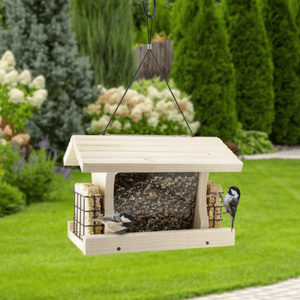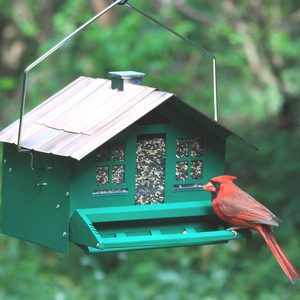3 Types of Seeds and Feeders Birds Love Best
Updated: Jan. 25, 2023
Maximize the traffic in your backyard with the right birdseed and bird feeders. Learn what birds eat sunflower, thistle and safflower seeds.
Our editors and experts handpick every product we feature. We may earn a commission from your purchases.
If you’ve just started trying to attract birds to your backyard, you may be unsure about what kind of birdseed you should pick, and what type of bird feeder to use. Don’t worry! We’ve got you covered with three most common birdseed types and the three most popular bird feeder styles. Plus, find out what birds eat sunflower seeds, safflower seeds and thistle seeds. Here’s what you need to know.
Birds That Eat Sunflower Seed
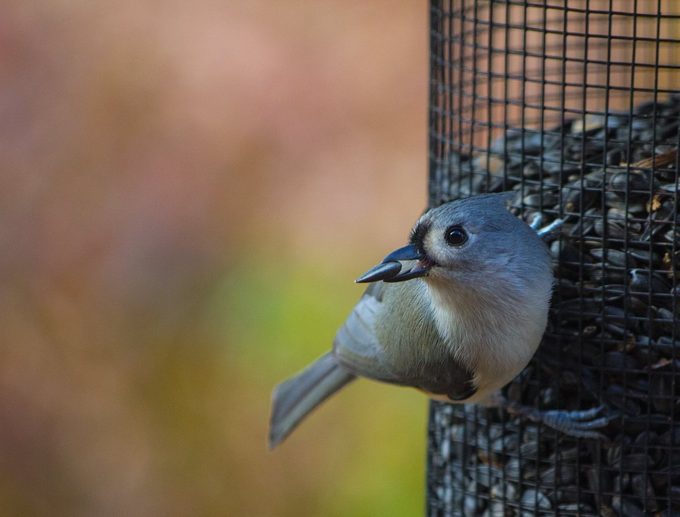
This food deserves the No. 1 spot in your yard because many, many birds eat sunflower seeds. Both in the shell and out-of-shell meats, these seeds appeal to finches, chickadees, nuthatches, grosbeaks, northern cardinals, blue jays and even some woodpeckers. Because sunflower seeds attract many species, including some large undesirable bully birds and squirrels, they’re best served in tube feeders that allow only small songbirds to perch on or enter the feeding chamber.
Birds That Eat Safflower Seed
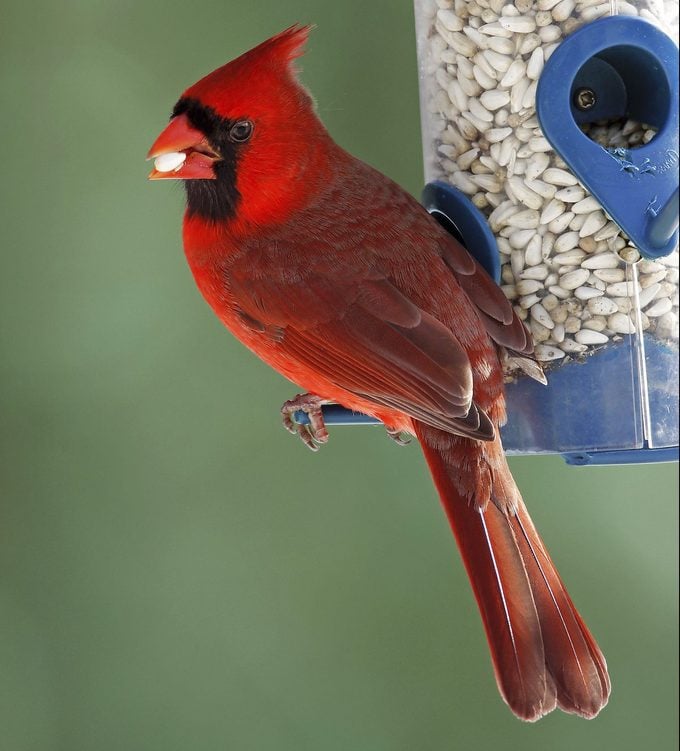
Safflower is a thistle-like annual with bright orange and yellow flowers that’s grown to make cooking oils. The seeds, which are high in protein and fat, are slightly smaller than sunflower seeds. A hard white shell protects the meat and has a slightly bitter flavor. That’s why fewer birds like the seed. But that’s not necessarily a bad thing. And squirrels don’t like safflower seed, either. Serve safflower seed in a hopper feeder or a platform feeder for northern cardinals, grosbeaks and house finches to devour. Or sprinkle some on the ground for mourning doves to find, too.
Birds That Eat Thistle Seed
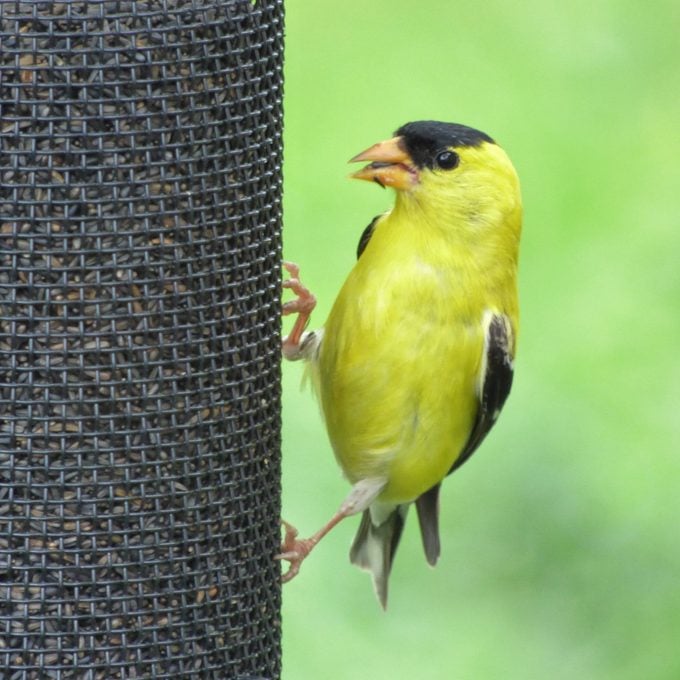
Lure American goldfinches, pine siskins, dark-eyed juncos and chickadees with nyjer, a tiny black seed that is sometimes called thistle. Nyjer seeds come from the African yellow daisy. They have a good mix of protein, fat and fiber, so they’re a good high-calorie option for winter birds. Bonus! Bully birds like grackles, starlings and blackbirds tend to leave thistle seeds alone. Make sure the seed stays dry, and replace uneaten food every few weeks. Serve nyjer in a tube or mesh feeder hung away from other feeders, so tiny birds can feed without disruption from larger species like blue jays. Here’s how to choose a feeder for finches.
Platform/Tray Bird Feeder

Flat or hanging platform feeders attract a variety of seed-eaters. Look for one with mesh or holes on the bottom to allow rain or snow drainage. This helps prevent mold and keeps the seed from spoiling. Check out the best bird feeders and birdseed for cardinals.
Best Platform Feeders
Tube Bird Feeder
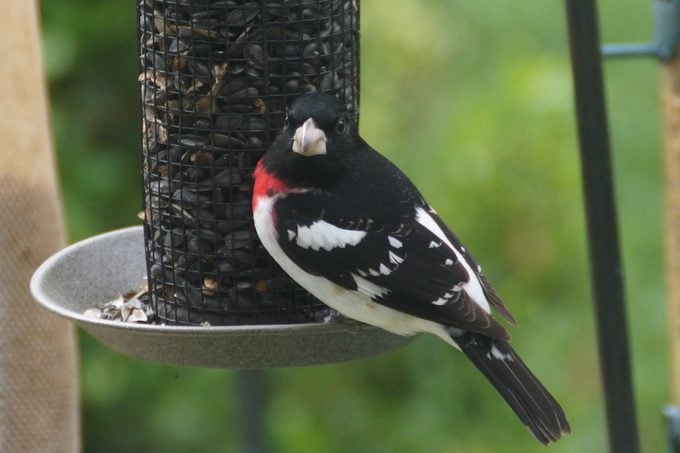
These popular feeders are shaped like cylinders with mesh or plastic-coated wire screens. Some are made of solid plastic with multiple small openings and perches. Tube feeders are great for small birds, such as finches, chickadees and nuthatches. Try these tips for squirrel-proof bird feeders.
Best Tube Bird Feeders
Hopper Bird Feeder

These feeders have an enclosed reservoir for seeds, kind of like a little house. Food slides down to the open feeding tray below. A big advantage is the seed stays dry when it rains! Woodpeckers, grosbeaks and blue jays frequent hopper feeders.
Best Hopper Bird Feeders
We Asked Readers: What Bird Food Is Most Popular in Your Yard?
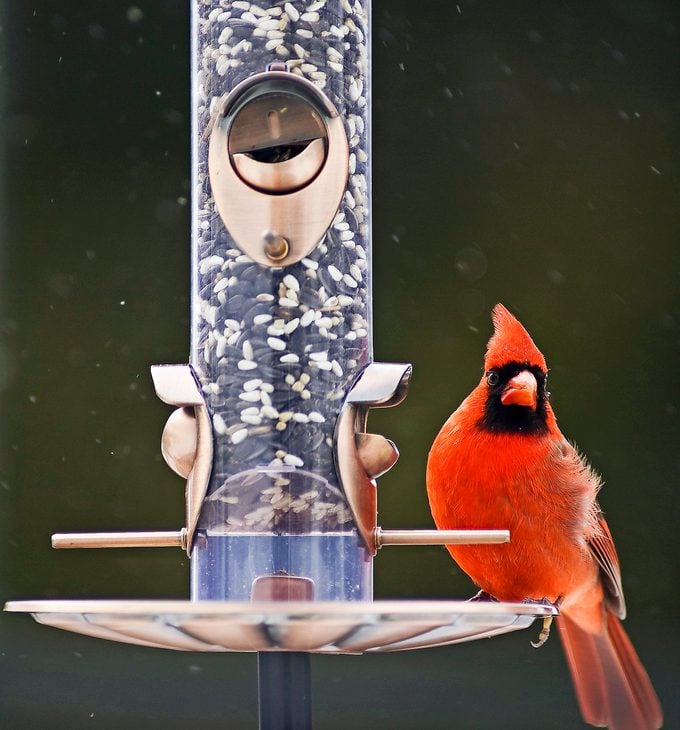
I recommend safflower seed because the squirrels leave it alone, but cardinals, woodpeckers, chickadees, titmice and grosbeaks love it. —Susan Perry, Edgewater, Florida
Pennington Classic Wild Bird Feed is most popular in my yard. It attracts a variety of birds year-round. —Liza Peniston, Augusta, Kansas
I serve a variety of seed, but I refill my mealworm cake feeder the most. —Gail Osteen, Bronson, Florida
To keep all of the birds happy and coming back for more, I combine 50 pounds of chicken scratch with about 12 pounds of black sunflower seed. —Ginger Clardy, Pipe Creek, Texas
I mix 4 parts black oil sunflower seed, 1 part safflower, 1 part peanut culls and 1 cup of dried mealworms. About 15 bird species visit daily, and even more come during migration season! —Sheldon Schall, Waunakee, Wisconsin
Black oil sunflower seed is the favorite in my backyard. Both the birds and other wildlife stop for a snack. —Teanna DiFava, Newmanstown, Pennsylvania





















